WHO Approves First Mpox Diagnostic Test for Emergency Use
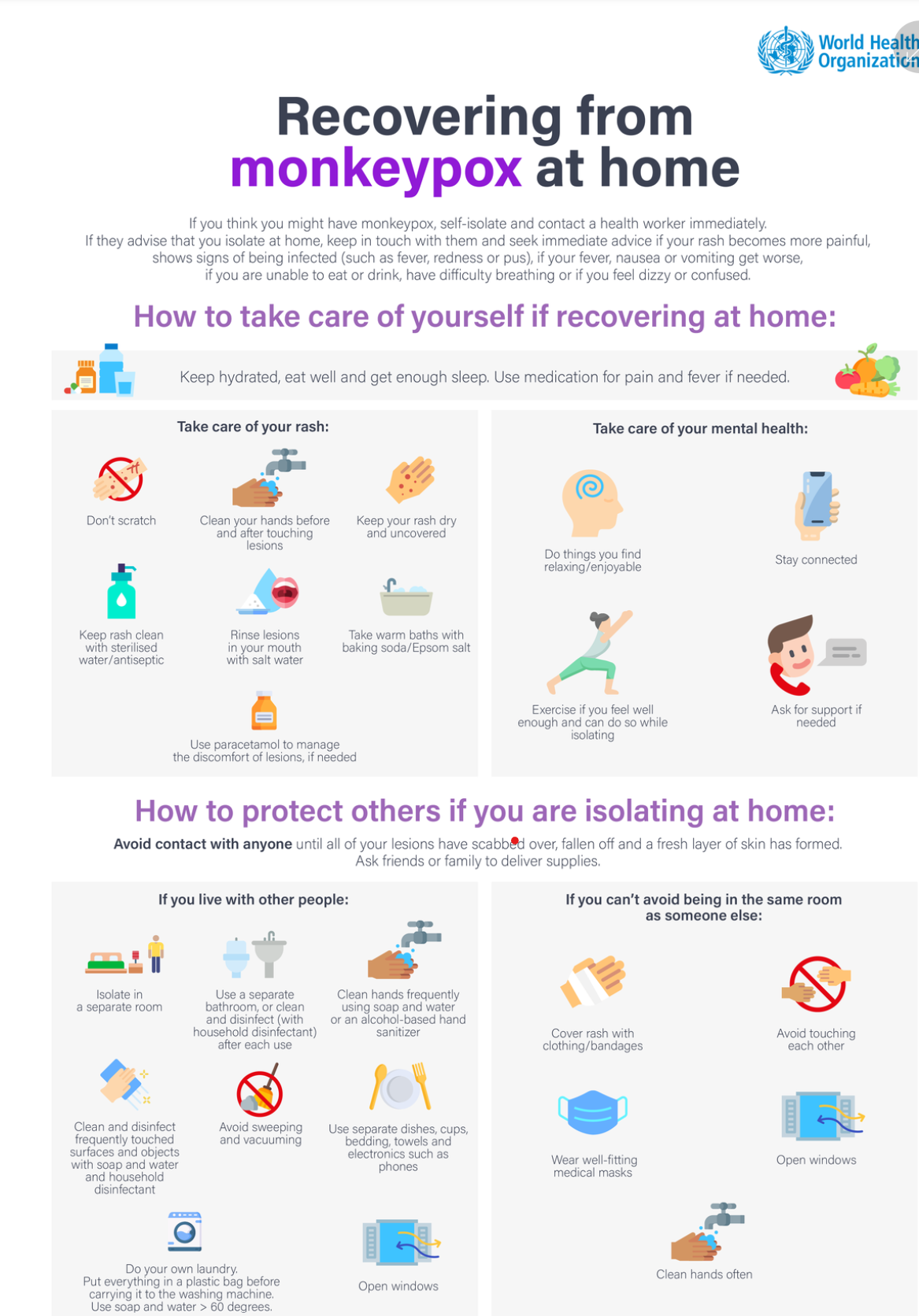
- 21 Oct 2024
In News:
- The World Health Organization (WHO) has listed the Alinity m MPXV Assay under its Emergency Use Listing (EUL) procedure.
- The test, developed by Abbott Molecular Inc., will help expand diagnostic capacity in countries experiencing Mpox outbreaks, particularly in Africa.
- Importance of Early Diagnosis:
- Early diagnosis enables timely treatment and virus control.
- It is critical for improving Mpox surveillance, especially in areas with high transmission.
Current Mpox Situation
- Global Context:
- Over 30,000 suspected cases reported in Africa in 2024.
- India has reported 30 cases since the WHO declared Mpox a global health emergency in August 2024.
- Testing Capacity:
- Limited testing capacity and delays in confirming cases have been a significant barrier to controlling the spread, especially in Africa.
- In India, 35 laboratories are currently equipped to test suspected Mpox cases.
Mpox Diagnostic Test Details
- Alinity m MPXV Assay:
- A real-time PCR test that detects monkeypox virus (MPXV) DNA from skin lesion swabs.
- Used by trained clinical laboratory personnel proficient in PCR techniques.
- Helps confirm suspected Mpox cases from pustular or vesicular rash samples.
- WHO's Role:
- The Emergency Use Listing (EUL) procedure accelerates the availability of life-saving products during public health emergencies.
- WHO aims to increase access to quality-assured diagnostics in regions most affected by Mpox.
About Mpox
- What is Mpox?
- Zoonotic disease caused by the monkeypox virus, part of the Orthopoxvirus genus (family Poxviridae).
- Closely related to smallpox, but generally less severe in humans.
- Transmission:
- Spread via physical contact with infected lesions, body fluids, or contaminated materials.
- Can also spread through animal bites, or activities like hunting, skinning, or eating infected animals.
- Two Clades:
- Clade I: Predominantly in Central and East Africa.
- Clade II: More common in West Africa; linked to the 2022 outbreak.
- Symptoms:
- Rashes, blisters, fever, sore throat, headache, muscle aches, back pain, swollen lymph nodes.
- Lesions typically scab over as they heal.
- Most people experience mild symptoms, but children, pregnant women, and immunocompromised individuals are at greater risk.
Treatment and Prevention
- No Specific Cure:
- Supportive care (e.g., pain relief, hydration) is recommended.
- In some cases, antivirals like tecovirimat (developed for smallpox) may be used under exceptional circumstances.
- Vaccination:
- Three smallpox vaccines are recommended for at-risk individuals: MVA-BN, LC16, and OrthopoxVac.
- Mass vaccination is not recommended by WHO.
JORDAN
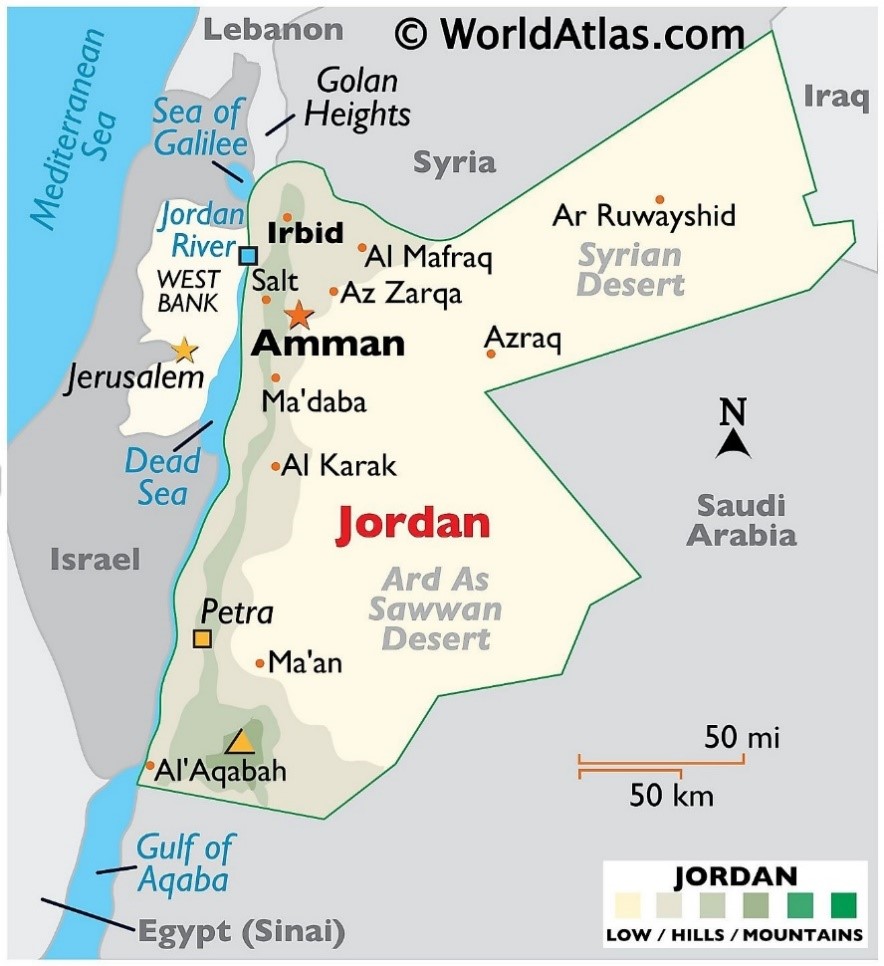
- 21 Sep 2024
In News:
Jordan has made history by becoming the first country in the world to be officially verified by the World Health Organization (WHO) as having eliminated leprosy. This achievement marks a significant advancement in global public health efforts.
Key Highlights:
- WHO Recognition: WHO Director-General Dr. Tedros Adhanom Ghebreyesus praised Jordan for this milestone, emphasizing the importance of stopping transmission and alleviating the suffering and stigma associated with leprosy.
- Historic Achievement: This success is not just about disease elimination but also about combating stigma and socio-economic harm.
- No Local Cases: Jordan has not reported any locally transmitted cases of leprosy for over two decades, demonstrating its effective public health strategies and strong political commitment.
- Independent Verification: WHO commissioned an independent team to conduct a thorough assessment, leading to the official recognition of leprosy elimination.
- Ongoing Vigilance: While celebrating this success, both the WHO and the Jordanian Ministry of Health emphasize the need for robust surveillance systems to detect and manage any future cases, including those from abroad.
Additional Context:
Leprosy, or Hansen's disease, is a chronic infectious condition caused by Mycobacterium leprae, primarily affecting the skin and nerves. Although it remains a neglected tropical disease, with over 200,000 new cases reported annually across more than 120 countries, Jordan's success showcases the potential for eradication through dedicated efforts.
This milestone serves as a beacon of hope, illustrating that with strong commitment, collaboration, and strategic planning, even longstanding public health challenges can be addressed effectively.
WHO Pandemic Treaty
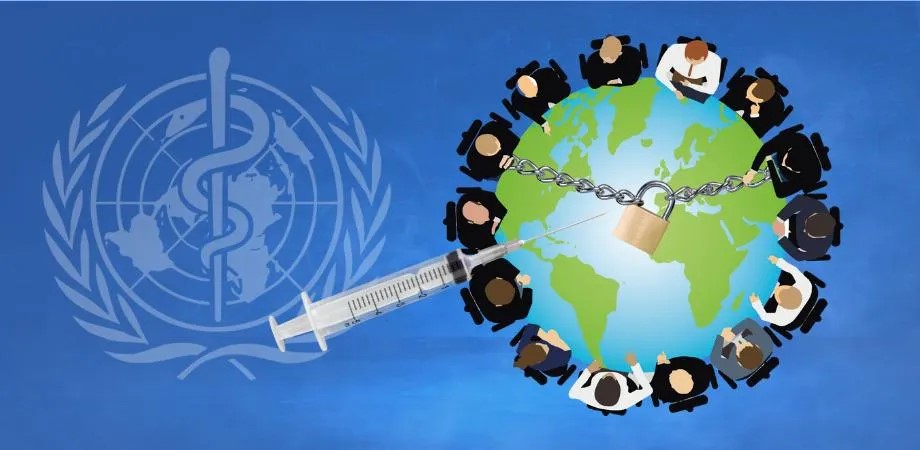
- 27 May 2024
Why is it in the News?
Health officials from the 194 member states of the World Health Organization hope next week to complete more than two years of negotiations on new rules for responding to pandemics when they gather in Geneva.
What is the Pandemic Treaty?
- The "Pandemic Treaty" or "Pandemic Accord" refers to an ongoing process at the World Health Organization (WHO) to negotiate an international agreement or convention on pandemic prevention, preparedness, and response.
- The idea was proposed in late 2020 amid the COVID-19 pandemic to strengthen global coordination and solidarity in addressing future pandemic threats.
- The WHO already has binding rules known as the International Health Regulations (2005) which set out countries’ obligations where public health events have the potential to cross national borders.
- These include advising the WHO immediately of a health emergency and measures on trade and travel.
- Adopted after the 2002/3 SARS outbreak, these regulations are still seen as functional for regional epidemics such as Ebola but inadequate for a global pandemic.
Key points about the proposed Pandemic Treaty/Agreement:
- Objective: To establish a global framework and rules to ensure better cooperation, data sharing, and coordinated response during future pandemics.
- Legal Status: It would be a legally binding international instrument, like a treaty or convention, requiring ratification by WHO member states.
- Core Elements: Likely to include provisions on equitable access to countermeasures, strengthening health systems, information sharing, One Health approach (human-animal-environment interface), and funding mechanisms.
- Negotiation Process: In December 2021, the World Health Assembly established an intergovernmental negotiating body to draft and negotiate the instrument through a member-state-led process.
- The goal is to learn from COVID-19 experiences and create a binding global framework that facilitates a more coherent, better-coordinated international response to potential future pandemic threats.
How will the Global Health Rules change?
- The updates to the International Health Regulations (IHR) include:
- A new alert system to provide different risk assessments for future outbreaks, addressing criticisms that the current system delayed the COVID-19 response.
- Introducing an intermediary alert stage called “early action alert,” in addition to the existing Public Health Emergency of International Concern (PHEIC).
- Considering a “pandemic emergency” designation for the most severe health threats, filling a gap in the current system which does not use the term "pandemic."
- Strengthening state obligations to inform the WHO of public health events, changing the language from “may” to “should.”
How Do Countries View the Pact?
- Negotiations have been marked by significant differences between wealthy and poor countries.
- The talks missed a key May 10 deadline, nearly collapsing and prompting WHO Director-General Tedros to call an emergency meeting to boost morale. Contentious issues include:
- The sharing of drugs and vaccines.
- Financing, with debates over setting up a dedicated fund versus using existing resources like the World Bank’s $1 billion pandemic fund.
- Political pressure, particularly from right-wing groups and politicians concerned about sovereignty, which the WHO denies.
What Happens Next?
- The new IHR rules and the pandemic accord are intended to complement each other, but opinions vary on whether one can exist without the other.
- Sources indicate that IHR negotiations are more advanced and likely to pass, with changes taking effect automatically after 12 months unless countries opt-out.
- In contrast, the pandemic treaty requires ratification, potentially taking years.
B virus
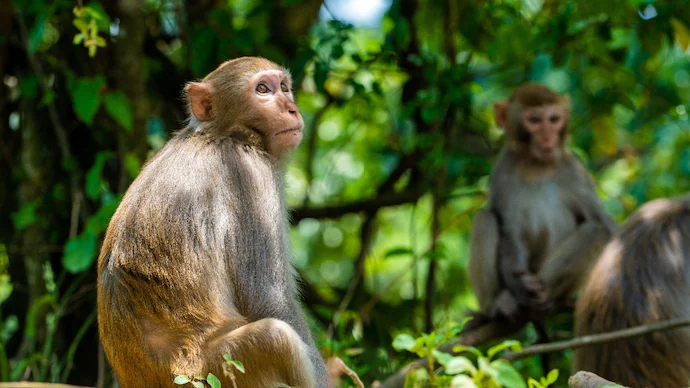
- 17 Apr 2024
Why is it in the News?
A 37-year-old man wounded by a wild monkey in Hong Kong is in intensive care suffering from infection with B virus.
What is B virus?
- B virus, also known as herpes B virus or Macacine herpesvirus 1 (McHV-1), is a type of herpesvirus found in macaque monkeys, particularly rhesus macaques.
- While asymptomatic in these animals, it can cause severe neurological complications, including encephalitis, in humans if transmitted through bites, scratches, or contact with infected bodily fluids.
Is B virus infection fatal??
- B virus infections in humans are rare but potentially fatal, with symptoms ranging from fever and headache to neurological dysfunction and death.
- Of the 50 cases reported in the US, 21 have died.
- Prompt treatment with antiviral medication is essential if exposure to B virus occurs, and preventive measures are crucial for individuals working with or handling macaques.
How does it spread??
- The transmission of this virus among humans is rare.
- So far, only one case of human-to-human transmission has been recorded.
What are the symptoms of B virus infection??
- Disease onset typically occurs within 1 month of exposure, although the actual incubation period can be as short as 3–7 days.
- The common symptoms seen during the infection are:
- Fever, headache, myalgia, and localized neurologic symptoms (e.g., pain, numbness, itching) might occur near the wound site.
- Lymphadenitis, lymphangitis, nausea, vomiting, and abdominal pain also can occur.
Treatment:
- The treatment for B virus includes providing antiviral medications.
Higgs Boson

- 10 Apr 2024
Why is it in the News?
Peter Higgs, the eminent theoretical physicist who first proposed the idea of what we now know as the “Higgs Boson,” died at the age of 94 on April 8.
What is the Higgs Boson?
- Particles make up everything in the universe but they did not have any mass when the universe began.
- They all sped around at the speed of light, according to the European Council for Nuclear Research (CERN).
- CERN, the European Council for Nuclear Research, is where the Large Hadron Collider (LHC) is located, and it's where the discovery of the Higgs Boson was made in 2012 through experiments conducted at the LHC.
- Everything we see like planets, stars, and life, emerged after particles gained their mass from a fundamental field associated with the particle known as the Higgs boson.
- The particle has a mass of 125 billion electron volts making it 130 times bigger than a proton?, according to CERN.
- Interestingly, the subatomic particles known as bosons are named after Indian Physicist Satyendra Nath Bose.
How does the Higgs Boson Work?
- The Higgs boson is a fundamental component of a theory formulated by Higgs and colleagues in the 1960s to elucidate how particles acquire mass.
- According to this theory, a pervasive Higgs energy field permeates the universe.
- As particles traverse this field, they interact with and draw in Higgs bosons, which congregate around the particles in varying quantities.
- Likewise, envision the universe akin to a party: less prominent guests can swiftly traverse the room without notice, while more popular guests attract clusters of people (the Higgs bosons), thus decelerating their movement through the room.
- Similarly, particles navigating the Higgs field experience a comparable phenomenon.
- Certain particles attract larger assemblies of Higgs bosons, and the more Higgs bosons a particle draws in, the greater its mass becomes.
Why is the Higgs Boson Called the “God Particle?”
- The Higgs boson is popularly known as the "God Particle".
- The name originated from Nobel Prize-winning physicist Leon Lederman's book on the particle which he titled the "Goddamn Particle", owing to frustration over how difficult it was to detect.
- However, his publishers changed the name to "The God Particle", which often draws ire from religious communities.
Who was Peter Higgs?
- Born in UK's Newcastle upon Tyne in 1929, Mr Higgs studied at King's College in London and has taught at the University of Edinburgh since the 1950s.
- Described as a modest man who published only a few scientific papers, he disliked his sudden fame calling it "a bit of a nuisance", even cringing when the term "Higgs boson" was used.
- Even as a lifelong atheist, he disliked the name "God particle".
- In 2013, Higgs and Francois Englert won the Physics Nobel Prize for their work on the particle which was thought to be a key to explaining the universe.
CoViNet
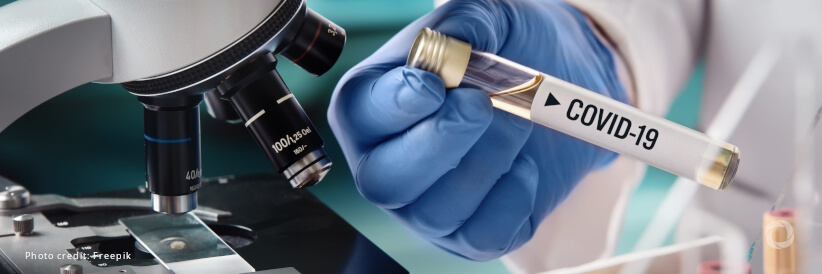
- 29 Mar 2024
Why is it in the News?
The World Health Organization (WHO) has launched a global network of laboratories to identify and monitor potentially novel coronaviruses that could emerge shortly.
What is CoViNet?
- The Coronavirus Network (CoViNet) is a global collaboration of laboratories with expertise in human, animal, and environmental coronavirus surveillance.
- This network aims to identify and monitor potential new coronaviruses that could emerge and impact public health worldwide.
- To enhance pandemic preparedness, CoViNet will expand its scope to include animal health and environmental surveillance, as well as timely risk assessments.
- This will allow the World Health Organization (WHO) to develop more informed policies and protective measures against future viral outbreaks.
- CoViNet will also play a pivotal role in building and supporting laboratory capacities in low- and middle-income countries to monitor MERS-CoV and other emerging coronaviruses of public health importance.
- By fostering knowledge exchange and capacity building, CoViNet aims to strengthen the global response to coronavirus threats.
- Furthermore, data generated through CoViNet's efforts will guide the work of the WHO's Technical Advisory Groups on Viral Evolution (TAG-VE) and Vaccine Composition (TAG-CO-VAC). These groups rely on cutting-edge research and surveillance data to inform public health policies and vaccination strategies.
- With 36 laboratories from 21 countries across all six WHO regions, CoViNet currently encompasses a wide range of expertise and resources.
- Three Indian institutions, namely, the Council of Scientific and Industrial Research-National Environmental Engineering Research Institute, the Indian Council of Medical Research-National Institute of Virology in Pune, and the Translational Health Science and Technology Institute, proudly represent the country in this global network dedicated to coronavirus surveillance and preparedness.
About the World Health Organization (WHO):
- The World Health Organization (WHO) stands as a paramount global health authority, dedicated to promoting health, preventing diseases, and improving healthcare systems worldwide.
- Established in 1948, WHO operates as a specialized agency of the United Nations, with its headquarters in Geneva, Switzerland.
- It collaborates with governments, international organizations, and civil society to address pressing health challenges and provide guidance and support to countries in need.
- WHO's mandate encompasses a wide array of health-related issues, including infectious diseases, non-communicable diseases, mental health, maternal and child health, and environmental health.
- Through research, policy development, and technical assistance, WHO plays a vital role in shaping health policies, setting standards, and coordinating responses to health emergencies such as pandemics and natural disasters.
- With a mission to ensure the highest attainable level of health for all people, WHO continues to lead efforts in global health governance, advocacy, and capacity-building, striving for a healthier, safer, and more equitable world.
WHO launches digital health platform agreed upon in India’s G20 presidency
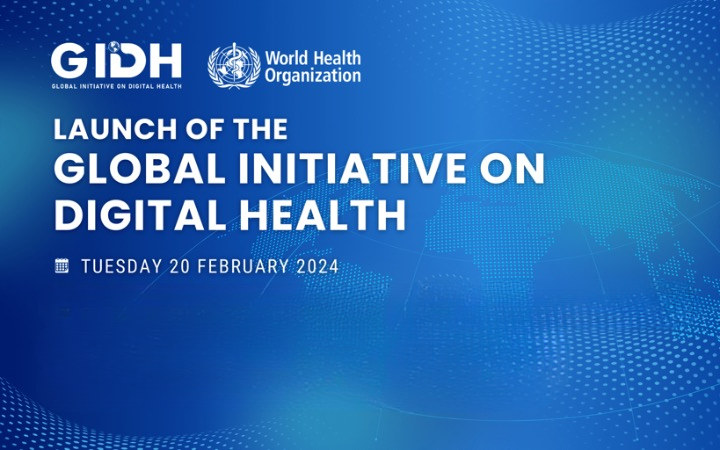
- 21 Feb 2024
Why is it in the News?
Achieving one of the three priority areas agreed upon during India’s G20 presidency in 2023, the World Health Organization (WHO) recently launched the Global Initiative on Digital Health (GIDH) virtually, a platform for sharing knowledge and digital products among countries.
About Global Initiative on Digital Health (GIDH):
- The Global Initiative on Digital Health (GIDH) is a network managed by the World Health Organization (WHO), dedicated to enhancing and coordinating efforts for country-led digital health transformation through collaborative partnerships and knowledge sharing.
- It was launched by the WHO and the Government of India during the G20 Health Ministerial Meeting in Gandhinagar.
- Functioning as a platform for inter-country knowledge exchange and digital product dissemination, GIDH strives to achieve several key objectives through collective action:
- Assess and prioritise countries' requirements for sustainable digital health transformation.
- Enhance the alignment of digital health resources and address unfunded priorities at the country level.
- Facilitate the accelerated attainment of the strategic objectives outlined in the Global Strategy on Digital Health 2020-2025.
- Promote capacity building and synergize efforts to support local development, maintenance, and adaptation of digital health technologies to evolving needs.
- Comprising four primary components, GIDH operates as a network of networks:
- Country Needs Tracker: Tracks and prioritises country-specific digital health requirements.
- Country Resource Portal: Provides a comprehensive map of available digital health resources within each country.
- Transformation Toolbox: Shares quality-assured digital tools to support country-led digital health initiatives.
- Knowledge Exchange: Facilitates the exchange of insights and best practices among member countries.
- GIDH extends support to countries in three fundamental ways:
- By attentively addressing their needs
- By fostering resource alignment to prevent fragmentation, and
- By offering access to quality-assured digital products.
- Membership in GIDH is open to all institutions actively involved in the digital health domain.
What is Digital Health?
- Digital health denotes the utilisation of technology, encompassing mobile devices, software applications, and various digital tools, to enhance health outcomes and streamline healthcare delivery.
- Essentially, it represents an interdisciplinary field at the intersection of technology and healthcare, integrating a diverse array of concepts and innovations.
- This encompasses a broad spectrum of technologies and services, spanning telemedicine, electronic health records, wearable devices, health information exchange, and more.
- Examples of notable digital health initiatives include India’s CoWIN platform and UNICEF's RapidPro and FamilyConnect programs.
- RapidPro, UNICEF’s real-time information platform, serves as a foundational component in its digital health portfolio.
- FamilyConnect, another UNICEF initiative, delivers targeted, lifecycle-based messages via SMS to various recipients, including pregnant women, new mothers, and heads of households.
India Initiatives on Digital Health:
- National Digital Health Mission (NDHM): Designed to establish a comprehensive national digital health ecosystem featuring unique health IDs, electronic health records (EHRs), and a platform for health data exchange.
- Ayushman Bharat Digital Mission (ABDM): Aims to develop a digital infrastructure for the Ayushman Bharat Health Infrastructure Mission (ABHIM), incorporating health registries, electronic claim processing, and telemedicine services.
- E-Sanjeevani Telemedicine Platform: Enables virtual consultations between healthcare providers and patients nationwide, enhancing access to medical care.
- Jan Arogya Setu App and CoWIN Platform: Offers access to healthcare services, facilitates appointment scheduling, and disseminates COVID-19-related information.
- Digital Aarogya Mitra (DAM): Implements a community health worker program utilising technology for data collection and community-based health interventions.
Diphtheria Outbreak in Guinea (WHO)
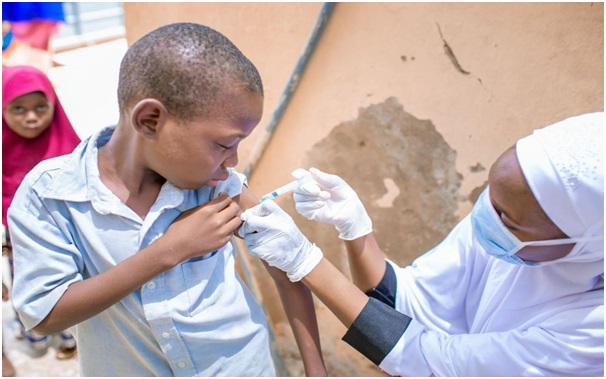
- 18 Oct 2023
Why in the News?
The World Health Organization (WHO) has announced that Guinea's Health Ministry has officially notified them of a diphtheria outbreak.
What is Diphtheria?
- Diphtheria, an extremely contagious and infectious disease, instigates severe inflammation in the nose, throat, and trachea (windpipe).
- This ailment is caused by strains of bacteria known as Corynebacterium diphtheriae, which produce a potent toxin responsible for the onset of illness.
Causes:
- The bacterial infection spreads through various means, including respiratory droplets emitted during coughing or sneezing.
- Transmission can also occur through contact with infected open sores or ulcers. The bacteria's toxin is the primary culprit behind the illness.
Symptoms:
- Manifesting 2-5 days post-infection, symptoms of diphtheria encompass a thick, grey membrane covering the throat and tonsils, a sore throat, hoarseness, swollen glands in the neck, difficulty breathing, nasal discharge, fever, chills, and fatigue.
- If the toxin enters the bloodstream, it can lead to damage to the heart, nerves, and kidneys.
Infection and Spread:
- Diphtheria bacteria thrive on person-to-person transmission, emphasizing respiratory droplets as a common mode of contagion.
- Skin infections are possible but seldom result in severe disease.
Treatment:
- Combatting diphtheria involves a dual-pronged approach:
- Antitoxin (Anti-diphtheritic Serum): This neutralizes bacterial toxins and is specifically employed for respiratory system infections. The antitoxin acts on toxins that haven't bound with cells and tissues.
- Antibiotics (Erythromycin or Penicillin): These medications eradicate the bacteria, preventing further spread. Antibiotics are effective against both the respiratory system and skin infections caused by diphtheria.
Egypt is Racing to Eliminate Hepatitis C (The Hindu)
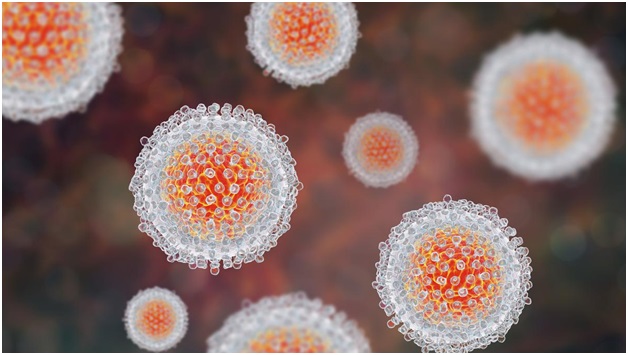
- 14 Oct 2023
Why in the News?
Recently the WHO announced that Egypt had made “unprecedented progress” towards eliminating hepatitis C.
Context:
- As per the World Health Organization (WHO), Egypt has attained a significant milestone by becoming the inaugural country to reach the "gold tier" status in its pursuit of eliminating hepatitis C, meeting the criteria established by the global health organization.
- Egypt has successfully identified 87% of individuals with hepatitis C and has administered curative treatment to 93% of those diagnosed, surpassing the WHO's gold-tier benchmarks.
- These targets include diagnosing a minimum of 80% of individuals with hepatitis C and offering treatment to at least 70% of those identified, marking a commendable achievement for Egypt in the global effort against the disease.
What is Hepatitis C?
- Hepatitis C is a viral infection impacting the liver, causing both acute (short-term) and chronic (long-term) illnesses that can be life-threatening.
- Transmission occurs through contact with infected blood, such as sharing needles, unsafe medical procedures like unscreened blood transfusions, and vertical transmission from an infected mother to her baby.
- It can also be transmitted through certain sexual practices involving blood exposure.
- Contrary to misconceptions, Hepatitis C is not spread through breast milk, food, water, or casual contact like hugging, kissing, or sharing food/drinks with an infected person.
- Symptoms encompass fever, fatigue, loss of appetite, nausea, vomiting, abdominal pain, dark urine, and jaundice (yellowing of the skin or eyes).
- Geographically, this viral infection is present in all WHO regions, with the Eastern Mediterranean Region and European Region bearing the highest disease burden.
- New infections often lack symptoms, making diagnosis challenging, and chronic infections may remain asymptomatic for decades until severe liver damage prompts noticeable symptoms.
- While no vaccine exists for Hepatitis C, antiviral medications offer effective treatment options.
What is Gold Tier Status?
- Gold tier status involves fulfilling distinct criteria, which encompass:
- Guaranteeing 100% blood and injection safety, with a commitment to maintaining a minimum of 150 needles/syringes annually for individuals who inject drugs (PWID).
- Achieving a diagnosis rate of over 80% for individuals living with chronic hepatitis C virus (HCV).
- Providing treatment to over 70% of individuals diagnosed with HCV.
- Instituting a sentinel surveillance program for hepatitis sequelae, with a focus on conditions such as liver cancer.
Tadoba-Andhari Tiger Reserve (TOI)
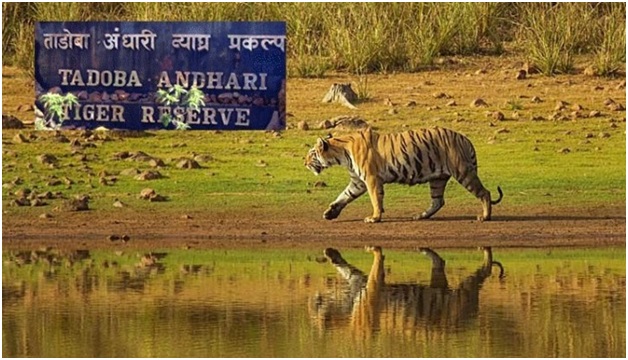
- 15 Nov 2023
Why in the News?
A dominant tiger named Bajrang said to have sired at least 50 cubs during his lifetime, recently died in a territorial fight with another powerful tiger, Chhota Matka, in the Tadoba-Andhari Tiger Reserve (TATR).
About Tadoba Andhari Tiger Reserve:
- Tadoba Andhari Tiger Reserve is the oldest and largest National Park in the Chandrapur district of Maharashtra.
- It is one of India's 47 project tiger reserves existing in India.
- The total area of the tiger reserve is 1,727 Sq.km, which includes the Tadoba National Park, created in the year 1955.
- The Andhari Wildlife Sanctuary was formed in the year 1986 and was amalgamated with the park in 1995 to establish the present Tadoba Andheri Tiger Reserve.
- The word 'Tadoba' is derived from the name of God "Tadoba" or "Taru," which is praised by local tribal people of this region, and "Andhari" is derived from the name of the Andhari river that flows in this area.
- Tadoba is presently home to more than 115 tigers, which is one of the highest in India.
- The vegetation of Tadoba forest is of Southern tropical dry deciduous type and is spread on around 626 sq. km.
- Teak is the prominent tree species in the forest.
- The Tadoba Tiger Reserve is rich in flora and fauna
- Flora: Some of the famous and widely seen flora of this park include Teak, Ain, Bija, Bamboo, Black Plum, and many others.
- Fauna: Tigers, Indian leopards, Sloth bears, Gaur, Nilgai, Striped Hyena, Spotted Deer, Barking Deer, Marsh Crocodile, etc.
What is ‘noma’, the latest addition to WHO’s list of neglected tropical diseases (DownToEarth)
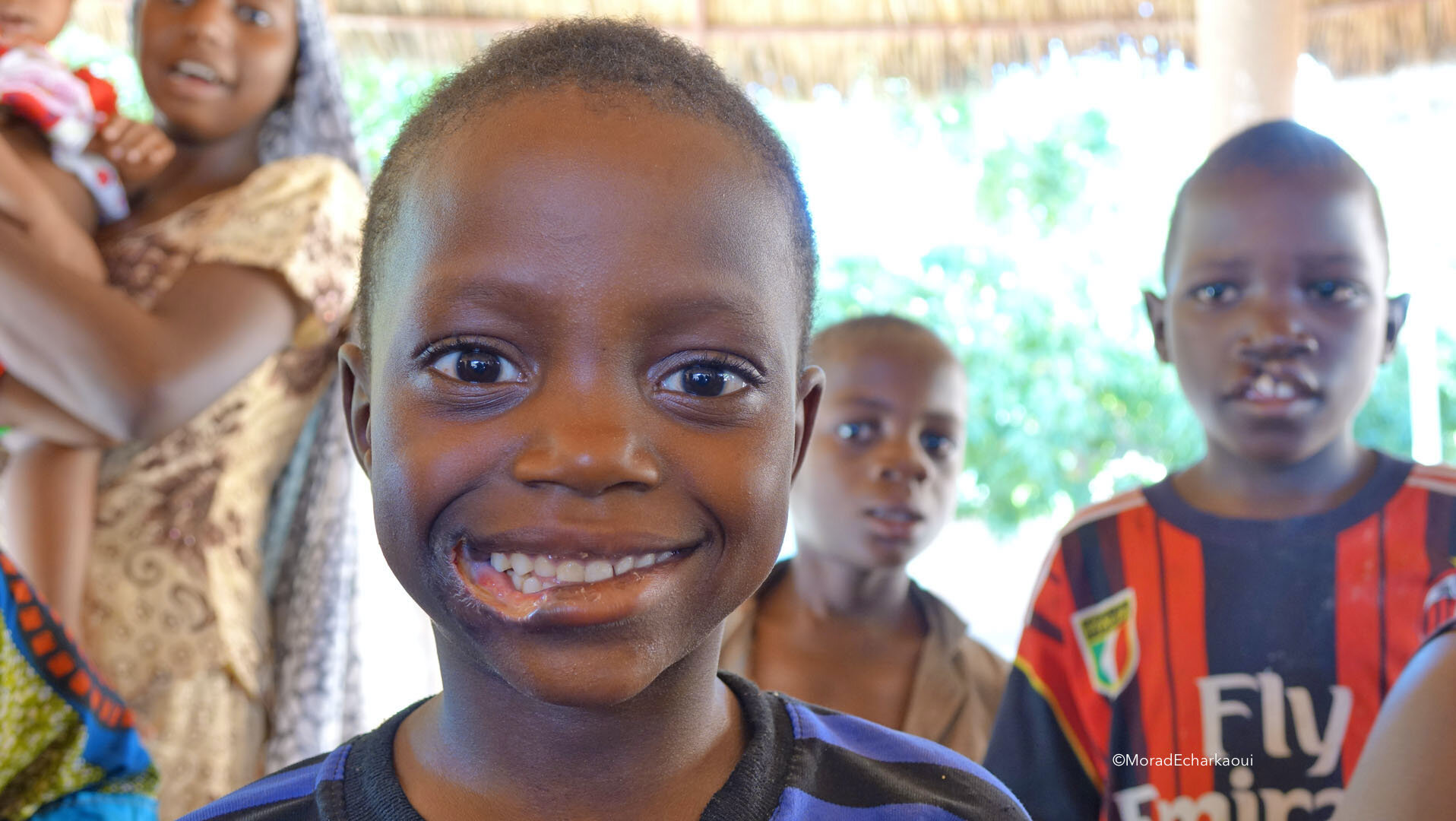
- 18 Dec 2023
Why is it in the News?
The World Health Organization (WHO) on December 15, 2023, added one of the world’s most under-recognised health challenges, noma, to its official list of neglected tropical diseases (NTD).
About the Noma disease:
- Noma is a severe gangrenous disease of the mouth and face with a mortality rate of approximately 90 per cent.
- It is also known as cancrum oris or gangrenous stomatitis and is often associated with extreme poverty, malnutrition and poor access to sanitation and oral hygiene.
- The name of the disease comes from the Greek word “nom?”, meaning “to devour”, as noma eats away facial tissue and bones if not treated early.
- Noma mainly affects children aged 2-6 years old and is found most commonly among those living in poor communities.
- The illness’s ‘hidden’ or neglected nature is most likely due to the fact that it affects the world’s most marginalised children.
- Noma is associated with a number of risk factors, including poor oral hygiene, malnutrition, weakened immune systems, infections, and extreme poverty.
- While the disease is not contagious, it prefers to attack when the body’s defences are weak.
- The NTD often starts as an ulcer on the mucous membrane lining, commonly after a bout of measles or other diseases, stated another 2003 study.
- “It quickly develops into a massive necrosis, moving from the inside outward, often involving major portions of the face.
- Treatment: “Early treatment with antibiotics, rehydration, correction of electrolytic imbalances, and administering nutritional supplements will halt the disease.
- The patients who survive face many consequences, like significant facial disfigurement, spasms of the jaw muscles, oral incontinence and speech problems.
- The disease is also called the ‘face of poverty’, as effective drugs like sulfonamides and penicillin and adequate surgical treatment for the effects remain inaccessible for many due to extreme poverty.
- “The recognition of noma as an NTD aims to amplify global awareness, catalyse research, stimulate funding, and boost efforts to control the disease through multisectoral and multi-pronged approaches.
How Google DeepMind’s AI breakthrough could revolutionise chip, and battery development (The Hindu)

- 14 Dec 2023
Why is it in the News?
Road traffic deaths fell by 5% to 1.19 million fatalities annually worldwide between 2010 and 2021, with 108 UN member nations reporting a drop, a report by the World Health Organization (WHO) said. India, however, registered a 15% increase in fatalities.
News Summary:
- The fifth edition of the WHO Global Status Report on Road Safety, released in 2023, serves as a comprehensive assessment of progress in mitigating road traffic deaths.
- This report evaluates advancements made between 2010 and 2021, establishing a foundation for meeting the ambitious target of the United Nations Decade of Action 2021–2030—to cut road traffic fatalities in half by 2030.
- Declared by the United Nations General Assembly in September 2020, the Decade of Action for Road Safety 2021-2030 strives to achieve a 50% reduction in road traffic deaths and injuries by 2030.
- Generous support from Bloomberg Philanthropies has played a crucial role in producing this report.
- Since 2007, Bloomberg Philanthropies has committed $500 million to facilitate road safety initiatives in low- and middle-income countries and cities worldwide
Key Insights from the Global Status Report on Road Safety 2023:
- Countries Achieving Over 50% Reduction in Road Traffic Deaths: Ten countries, including Belarus, Brunei Darussalam, Denmark, Japan, Lithuania, Norway, Russian Federation, Trinidad and Tobago, the United Arab Emirates, and Venezuela, have successfully reduced road traffic deaths by more than 50%.
- Additionally, 35 more countries have made commendable progress, achieving a reduction in road traffic deaths ranging from 30% to 50%.
- Leading Cause of Death for Children and Youth: As of 2019, road traffic crashes have become the primary cause of death for children and youth aged five to 29 years.
- Globally, these crashes rank as the 12th leading cause of death across all age groups.
- 5% Reduction in Road Traffic Fatalities in the Last Decade: Despite a population growth of nearly 14 billion over the last decade, there has been a 5% reduction in the absolute number of road traffic fatalities.
- The road fatality rate has declined from 18 per 1 lakh people in 2010 to 15 per 1 lakh in 2021, marking a 16% decrease in the road traffic death rate since 2010.
- Regional Distribution of Traffic Deaths: The regional breakdown indicates that:
- 28% of global road traffic deaths occurred in the WHO’s South-East Asia Region
- 25% in the Western Pacific Region
- 19% in the African Region
- 12% in the Region of the Americas
- 11% in the Eastern Mediterranean Region, and
- 5% in the European Region.
- The situation in Low- and Middle-Income Countries: Nine out of 10 road traffic deaths transpire in low- and middle-income countries, with fatalities in these nations being disproportionately higher (three times) in comparison to the number of vehicles and roads they possess.
- Countries Meeting WHO Best Practices for Risk Factors: Only six countries have legislation aligning with WHO best practices for all risk factors (speeding, drunk driving, and the use of motorcycle helmets, seatbelts, and child restraints).
- Meanwhile, 140 countries, constituting two-thirds of UN Member States, have such laws governing at least one of these risk factors.
- India-Specific Observation: In India, the reported deaths due to road crashes increased from 1,50,785 in 2018 to 1,53,792 in 2021.
- Notably, the number stood at 1.3 lakh in 2010.
R21/Matrix-M vaccine (The Hindu)
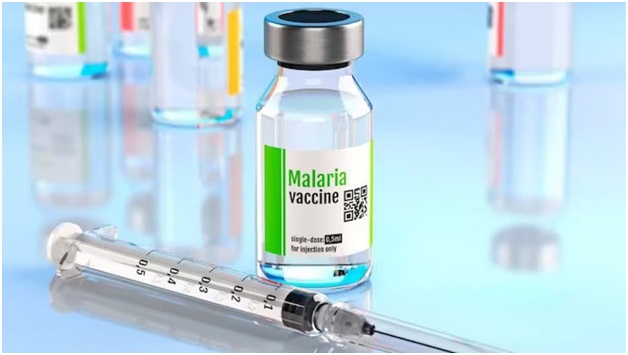
- 04 Oct 2023
Why in the News?
The WHO has given its thumbs-up to the R21 vaccine, the second malaria vaccine they've recommended, following the RTS, S/AS01 vaccine, which got their approval in 2021. Right now, the WHO is closely examining this vaccine for prequalification, which is like their gold seal of approval. Once it's prequalified, organizations like GAVI (a global vaccine alliance) and UNICEF can purchase the vaccine from the manufacturers.
About the R21/Matrix-M Vaccine:
- It's a new vaccine designed to protect children from malaria.
- The University of Oxford and the Serum Institute of India developed it, with support from the European and Developing Countries Clinical Trials Partnership (EDCTP), the Wellcome Trust, and the European Investment Bank (EIB).
- This vaccine is a game-changer as it's the first one to meet the WHO's target of 75% effectiveness.
- Burkina Faso, Ghana, and Nigeria have already given the green light for its use.
- In early 2024, these African countries will start administering the vaccine, and by mid-2024, it will be available in other countries too.
C-TAP initiative (WHO)
- 04 Sep 2023
What is the News ?
Recently, the COVID-19 Technology Access Pool (C-TAP) has revealed three fresh licensing agreements obtained via the Medicines Patent Pool (MPP).
Facts About:
- In May 2020, the World Health Organization (WHO) and the Government of Costa Rica, in collaboration with 44 Member States, the UN Development Programme, Unitaid, UNAIDS, and implementing partners like the Medicines Patent Pool (MPP), launched C-TAP.
- C-TAP operates based on the principles outlined in the Solidarity call to action.
- Its primary objective is to provide a platform where developers of COVID-19 treatments, diagnostics, vaccines, and other health products can voluntarily share their intellectual property, knowledge, and data.
- This sharing is aimed at expediting technological advancements and increasing global production capabilities in the fight against the pandemic.
